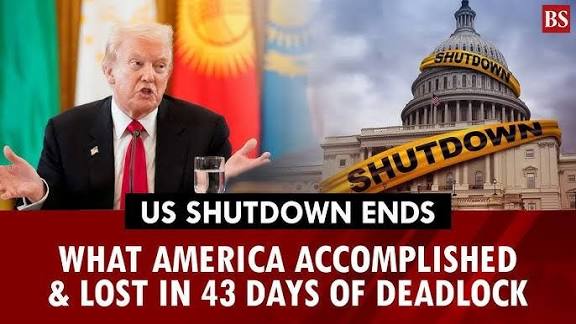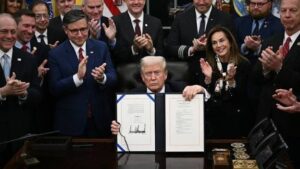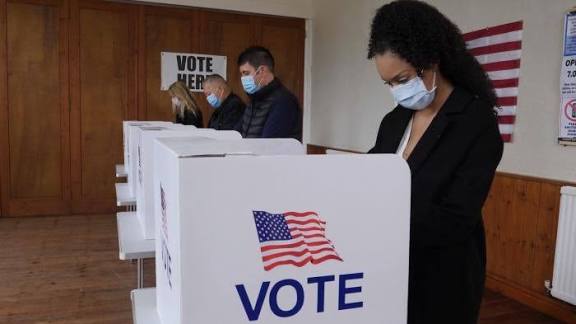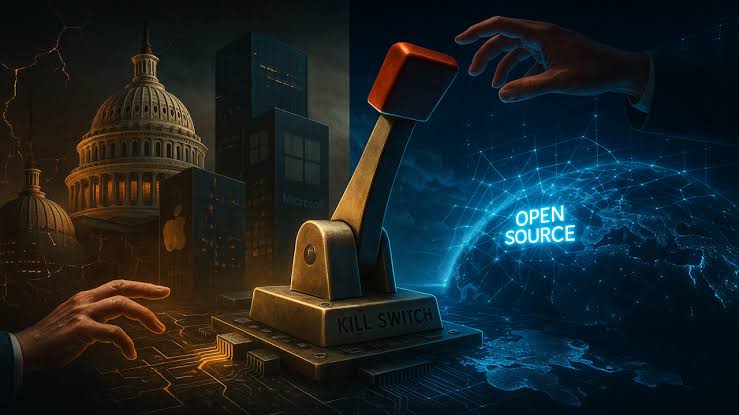America in Shock: 43-Day Government Shutdown Ends Massive Changes Ahead

Millions of Americans welcomed the end of the record-setting 43-day government shutdown and the resumption of food stamp benefits with relief. Today we will discuss about America in Shock: 43-Day Government Shutdown Ends Massive Changes Ahead
America in Shock: 43-Day Government Shutdown Ends Massive Changes Ahead
The United States has just emerged from an unprecedented political and economic crisis. After 43 turbulent days, the longest government shutdown in American history has officially ended. But even though federal doors are reopening and employees are returning to work, the nation is grappling with shock, uncertainty, and the looming consequences of a shutdown that shook nearly every corner of American life.
This article explores what happened, why it happened, how it disrupted the country, and what massive changes lie ahead.
1. The Longest Shutdown in U.S. History — What Happened?

The shutdown began on October 1, when Congress failed to pass a funding bill due to an intense standoff over health-insurance subsidies tied to the Affordable Care Act. One side demanded a long-term extension of the subsidies, while the other insisted the issue belonged in separate negotiations.
With neither side willing to bend, the government officially ran out of funding and shut down.
Federal Paralysis on a Massive Scale
More than 750,000 federal workers were furloughed, while countless others—especially those considered essential such as air-traffic controllers, border agents, and TSA staff—were forced to work without pay. Some government agencies shut down completely; others operated at drastically reduced capacity.
The shutdown disrupted:
Passport and visa services
National parks and museums
Federal research programs
Grant and contract approvals
Food-assistance distributions
Housing and small-business loans
Economic data reporting
Over six weeks, the country watched the crisis escalate with no clear end in sight.
2. A Deal Finally Reached — But Not a Full Resolution
The crisis finally broke when a narrow bipartisan coalition negotiated a temporary funding bill. The Senate approved the deal, the House followed, and the President signed it, officially ending the shutdown after 43 days.
But this deal is not a long-term solution. It funds the government only for a short window, meaning the same issues could resurface in a matter of weeks.
Immediate Effects of Reopening
All furloughed workers will receive back pay, though processing the enormous backlog may take weeks.
Federal agencies are returning online, but many warn that full restoration of operations will take time.
Programs for food assistance, veterans’ healthcare, and federal safety measures have resumed.
Delayed public services—passport applications, federal permits, inspections—are slowly restarting.
Still, millions of Americans remain uneasy. The shutdown is over, but its impacts have only begun to unfold.
3. Economic Shockwaves: A Financial Blow That Won’t Be Forgotten
Shutdowns always hurt the economy, but a 43-day shutdown delivers seismic damage.
Independent economists estimate:
Billions in lost economic output
A reduction of 1–2 percentage points from quarterly U.S. GDP growth
A blow equal to almost 1% of annualized economic growth
Significant declines in government contractor revenue
Delays in housing, business, and agricultural loans
A Hit to Households and Businesses
For millions of Americans, the shutdown wasn’t political—it was personal.
Federal workers struggled to pay bills, mortgages, rent, student loans, and childcare. Many took out emergency loans or maxed out credit cards just to survive.
Small businesses dependent on federal contracts faced delayed payments or no payments at all. Restaurants, transportation services, janitorial companies, and service providers near federal buildings saw revenue drop sharply.
Mortgage seekers faced delays because essential federal verifications weren’t available. Home insurance approvals slowed. Rural housing programs froze entirely.
Travelers encountered longer airport lines and reduced flight operations as unpaid air-traffic controllers and TSA staff called in sick at higher-than-usual rates.
4. A Nation “Flying Blind”: Damage to Federal Data Systems
One of the least visible but most impactful consequences of this shutdown was the disruption to federal economic and statistical reporting.
Key reports were delayed or canceled:
Jobs numbers
Consumer price index
Retail sales
Housing starts
Inflation data
Trade statistics
Without these reports, policymakers, economists, businesses, and investors lost access to the data used to guide critical financial decisions.
Some experts have warned that the shutdown caused long-term or irreversible harm to federal statistical systems, including survey participation gaps and operational backlogs that may take months to repair.
5. Political Fallout: Finger-Pointing and Fractured Trust
As soon as the shutdown ended, the political blame game began.
Divided Parties, Divided Public
The narrow votes reflected deep divisions within Congress. Moderates helped break the stalemate, but the majority of lawmakers remained entrenched along party lines. This signals that future negotiations may be just as volatile.
Public frustration has reached new heights. Americans say they are tired of their livelihoods being used as leverage in political battles. Multiple polls show declining confidence not just in individual leaders, but in Congress as a whole.
An Election Issue in the Making
Political strategists on both sides are preparing to use the shutdown as ammunition in the next election cycle.
One side will argue they fought to protect healthcare access.
The other will claim they worked to reopen the government and restore stability.
But voters—especially federal workers—are unlikely to forget the hardships they endured.
6. The Human Cost: Stress, Uncertainty, and Real Hardship
Numbers tell one part of the story. People tell another.
Families on the Brink
Many federal employees live paycheck to paycheck. Going 43 days without income:
Created food insecurity
Triggered loan defaults
Caused missed rent and mortgage payments
Forced reliance on credit cards
Increased stress and anxiety
Food banks across the country reported surges in demand as furloughed employees sought help.
Airports, Hospitals, and Everyday Services Disrupted
Although essential services continued, they didn’t continue smoothly. Airports experienced staffing shortages. Federal health programs saw delays in testing, approvals, and grants. National parks were closed or left without supervision, leading to safety issues and property damage.
7. What Massive Changes Are Coming Next?
Although the government has reopened, the shutdown exposed structural weaknesses that cannot be ignored. Major changes—political, economic, and administrative—are now being discussed.
A. Another Shutdown Looms
The funding bill only covers a short period. If Congress fails to agree on a long-term budget, another shutdown could happen soon.
B. Healthcare Battle Returns
The central issue—health-insurance subsidies—was not resolved. A future vote has been scheduled, but it is far from guaranteed to succeed. Millions of Americans could face higher premiums if no agreement is reached.
C. Protecting Federal Workers
Lawmakers are proposing reforms such as:
Automatic pay continuation during shutdowns
Expanded emergency protections for essential workers
Penalties for political actors who trigger shutdowns
Support for such reforms has grown significantly.
D. Rebuilding Government Capacity
Agencies now face:
Massive backlogs
Staffing shortages
Delayed contracts and payments
Overflowing caseloads
Data-collection gaps
Restoring full functionality may take several months.
E. Economic Preparedness and Business Contingency Planning
Private companies and local governments are now reevaluating their dependence on federal operations. Many may shift strategies to reduce vulnerability to future shutdowns.
8. Lessons America Must Not Forget
This shutdown will be studied for years, not just for its length but for the profound vulnerabilities it exposed.
Key lessons:
Shutdowns carry enormous economic costs and should never be considered negotiating tools.
Millions of Americans suffer, especially workers living paycheck to paycheck.
Essential systems are fragile, from economic reporting to air-traffic safety.
Short-term funding bills are risky, creating recurring crises.
Public trust cannot withstand repeated political brinkmanship.
Conclusion: America Is Still Recovering
Although the government has reopened and the immediate crisis is over, America is far from “back to normal.”
The 43-day shutdown left behind:
Economic scars
Millions of stressed or financially damaged families
Deep political divisions
Weaknesses in federal systems
A risk of another shutdown just ahead
Unresolved healthcare battles
Growing demands for structural reform
America is in shock—not only because of what happened, but because it could easily happen again.
The challenge now is clear:
Will leaders use this moment to build a more stable future, or will the nation continue to live under the shadow of shutdowns?
How useful was this post?
Click on a star to rate it!
Average rating 0 / 5. Vote count: 0
No votes so far! Be the first to rate this post.
About the Author
usa5911.com
Administrator
Hi, I’m Gurdeep Singh, a professional content writer from India with over 3 years of experience in the field. I specialize in covering U.S. politics, delivering timely and engaging content tailored specifically for an American audience. Along with my dedicated team, we track and report on all the latest political trends, news, and in-depth analysis shaping the United States today. Our goal is to provide clear, factual, and compelling content that keeps readers informed and engaged with the ever-changing political landscape.




